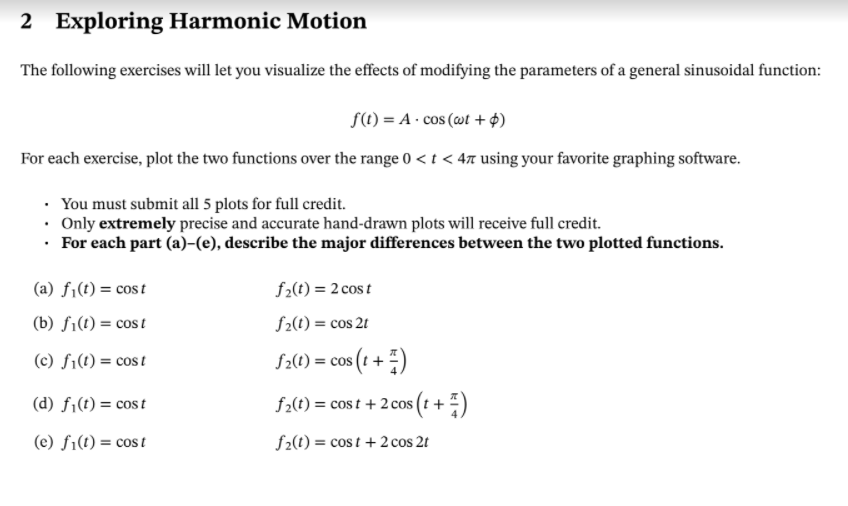2 Exploring Harmonic Motion The following exercises will let you visualize the effects of modifying the parameters of a general sinusoidal function: f(t) = A · cos (wt + ¢) For each exercise, plot the two functions over the range 0 < t < 47 using your favorite graphing software. • You must submit all 5 plots for full credit. • Only extremely precise and accurate hand-drawn plots will receive full credit. For each part (a)-(e), describe the major differences between the two plotted functions. (a) f1(t) = cos t f2(t) = 2 cos t (b) f1(t) = cos t S2(1) = cos 2t (c) f1(t) = cost S2(0) = cos (t + )
Simple harmonic motion
Simple harmonic motion is a type of periodic motion in which an object undergoes oscillatory motion. The restoring force exerted by the object exhibiting SHM is proportional to the displacement from the equilibrium position. The force is directed towards the mean position. We see many examples of SHM around us, common ones are the motion of a pendulum, spring and vibration of strings in musical instruments, and so on.
Simple Pendulum
A simple pendulum comprises a heavy mass (called bob) attached to one end of the weightless and flexible string.
Oscillation
In Physics, oscillation means a repetitive motion that happens in a variation with respect to time. There is usually a central value, where the object would be at rest. Additionally, there are two or more positions between which the repetitive motion takes place. In mathematics, oscillations can also be described as vibrations. The most common examples of oscillation that is seen in daily lives include the alternating current (AC) or the motion of a moving pendulum.

Trending now
This is a popular solution!
Step by step
Solved in 2 steps with 3 images






